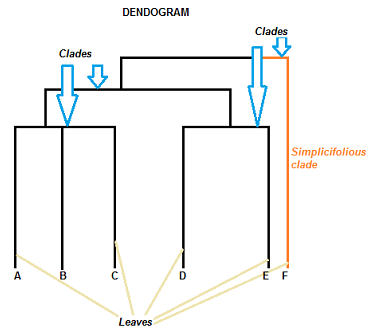
Image Source: Google Images
A dendrogram can be understood as a column graph or a row graph. Some dendrograms are circular or have a fluid shape, but the software will usually produce a row or column graph. No matter what the shape, the basic graph consists of the following same parts:
- For arranging the Clades (branch), take the help of how similar (or dissimilar) they are. Clades that are having or close to the same height are similar to each other; whereas clades with different heights are dissimilar from each other, which implies that the more the value of the difference in height, the more will be dissimilar.
- Each clade has one or more leaves.
Now for the given diagram, we have:
- Leaves A, B, and C are more similar to each other than they are to leaves D, E, or F.
- Leaves D and E are more similar to each other than they are to leaves A, B, C, or F.
- Leaf F is substantially different from all of the other leaves due to different heights in the dendrogram.
Theoretically, a clade can have an infinite amount of leaves but the more leaves we have, the harder the dendrogram will be to read and understand with the help of naked eyes.